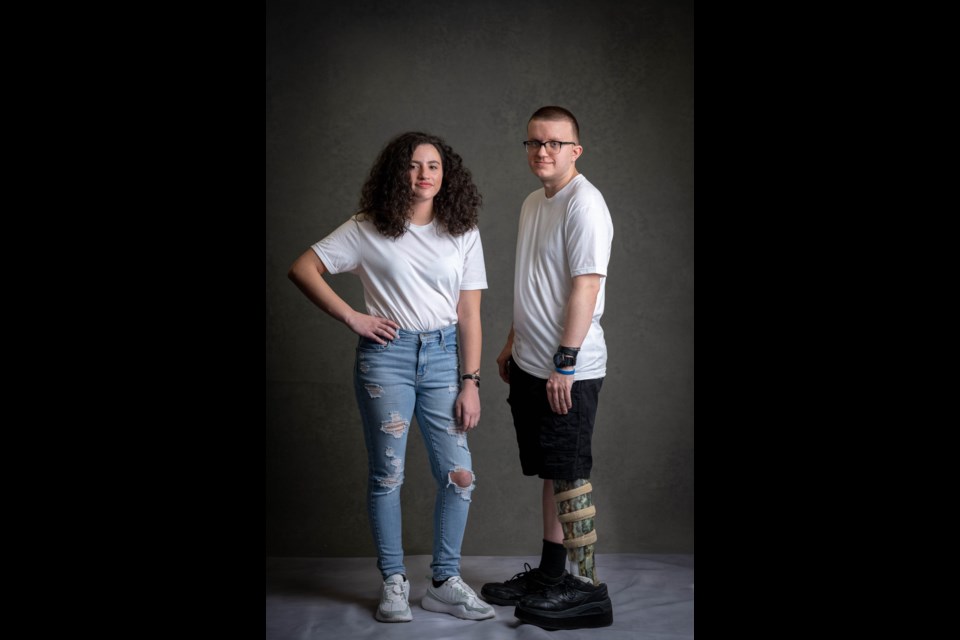Brooklyn resident Aiden Warga was only six months old when his parents grew suspicious of the numerous birthmarks that appeared across his body. Craig Warga, Aiden's father and an award-winning photographer, visited a pediatrician with his wife, who told them this could be a sign of neurofibromatosis.
Neurofibromatosis Type 1 (NF1) is a neurological disorder caused by a gene mutation. The disease affects every 1 in 3,000 individuals, 30 to 50% of whom develop plexiform neurofibromas. These are noncancerous tumors that can grow along nerves on the body.
Although the tumors are usually benign, they could cause health problems by pressing on nearby body tissue. This is part of what made Aiden's parents fearful when their son was diagnosed.
When he began to learn more about NF, Warga discovered how diverse its effects can be. Some people experience extreme facial or body disfigurements and medical issues, including vision impairment and breathing problems. Meanwhile, some people with NF could never know they have it because they could be visually and medically unaffected.
On Googling NF, Warga and his wife saw images depicting the extremes of the disease, which was frightening. Still, Aiden's doctor told them 80% of people with NF live normal lives.
This is what led Warga to begin photographing people with neurofibromatosis—a desire to change the narrative surrounding the disease.
"That's not what you see when you look online, so that's what got my brain inspired to work on the photo project with the Children's Tumor Foundation," Warga said. "I wanted to see those normal people."
The photo series, created by the Children's Tumor Foundation (CTF), was Warga's way of showing the average person with NF. Craig and Aiden, now 14-years-old, were able to immerse themselves in the NF community.
During the project, Warga made sure the disease was not "sugarcoated." The campaign, called Make NF Visible, photographed pairs of people with visible and invisible afflictions to show the range of effects NF can have.
The goal was to raise awareness and show that there is "no textbook case of what NF looks like," according to Warga.
CTF is a foundation focused on accelerating treatments for neurofibromatosis. They invest in research and build communities of doctors, researchers, stakeholders, and patients.
According to Annette Bakker, president of CTF, the foundation is constantly working to push forward the work being done to create treatments for NF. They have made gene therapy investments to get the "best and brightest" doctors in the field.
"I always say we work for NF," Bakker said. "But what we do is kind of building a blueprint for how to address rare diseases."
Their work has come a long way, as the first drug to treat NF1 was approved last year in April.
Bakker attributes this success in part to the Make NF Visible photo series, which she believes showed the diversity of neurofibromatosis. She adds the photo campaign was so well put together that CTF got a lot of press from it.
This exposure is exactly what Warga and Aiden believe the NF community needs. While Warga understands the importance of knowing the clinical aspect of NF, he believes most important is seeing the people.
For Warga, the photo series humanizes the disease in a way that medical journals do not. Bakker seconds this sentiment.
"NF is no longer a fancy scientific problem," Bakker said. "NF is affecting real people and it's time to show that."
Bakker and Warga hope the increased exposure to NF will lead to more research. Beyond this, Warga hopes the world develops a more general acceptance of people with NF.
"I just hope that people can look beyond [facial disfigurements] and just always come back to the fact that there's a person there," Warga said. "That's not every case of NF, but that's definitely one thing that I think the world could improve upon a little bit."




